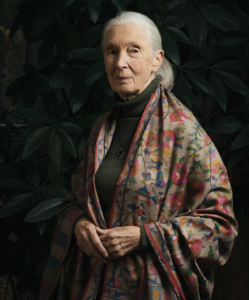Music feeds off emotion

Photo by: Rachel Bjorkman ’24. Professor Boone introduces the idea and definition of emotion to a full class. Multiple pieces of a variety of music were showcased for their created emotion.
December 12, 2022
The Berlin Humanities Club hosted Professor Graeme M. Boone on Nov. 30th to share his thoughts on the relationship between music and emotion.
The Humanities Club, commonly referred to as the Philosophy club, is cosponsored by the Center for Ethics and Human Values at the Ohio State University. They bring in multiple speakers every year to invite discussion to the members.
In order to become a Professor of Music at Ohio State, Boone earned a degree at the University of California at Berkeley as well as attended the National Superior Conservatory of Music, Paris. He also received a PhD from Harvard where he taught for a few years as well.
While his research primarily focuses on historical music, like Renaissance music, and modern American music, he additionally teaches a range of courses based on music. These include ancient, jazz, and classical music as well as hip hop and even rock ‘n’ roll. With such a basis of knowledge, his credibility cemented the student’s gained understanding of music and emotion.
In his introduction to the relationship between music and emotion, he first clarified the importance of the absence of a “like” or “dislike” label on music. It doesn’t quite allow the music to be interpreted on what it makes an individual feel besides the choice of what music someone personally prefers.
Generally, emotions are placed into Paul Ekman’s five continents of emotion: fear, disgust, anger, sadness, and enjoyment. Boone mentioned the familiarity of these categories as they are the fundamental concept in the 2015 Disney movie, “Inside Out”.
Philosophers, however, commonly disagree and some believe that in addition to the ability to feel multiple emotions, humans are in a constant state of two or more emotions at once. This wards off the idea that emotions “battle” each other, but proves to show the complexity music has in the expression of emotion.
Typically, the two prominent emotions portrayed and easiest to identify are happiness and sadness. When sorting the two emotions, musicians customarily can match them to the key of the music piece. The key to a musical piece is the scale or set of notes in which the music evolves around. Based on the pitch of the notes, scales can be sorted into minor or major keys. The third, sixth, and seventh notes in a minor chord have a slightly lower pitch compared to that of a major. In most pieces, songs in a major key show enjoyment and pleasure while songs in a minor key compel the listener to feel sadness or a darker emotion.
This, however, is not always true. The state of sadness, fear or another darker emotion tends to be based on the sense of internalized sound while lighter emotions rely on expressive sounds. For instance, “Pick up the Pieces” by the Average White Band is set in a minor key. Still, it is viewed as an upbeat song that expresses more energy.
Lyrics may also change the tone to focus on the meaning rather than the sound. It mixes, however, to create emotion.
“Music expresses harmony. Harmony means things that are different from getting along. When we are having a hard time in the world, music helps us feel better about it,” Boone said.
Several parts of a musical piece create emotion, but the fact that it does is undeniable.










